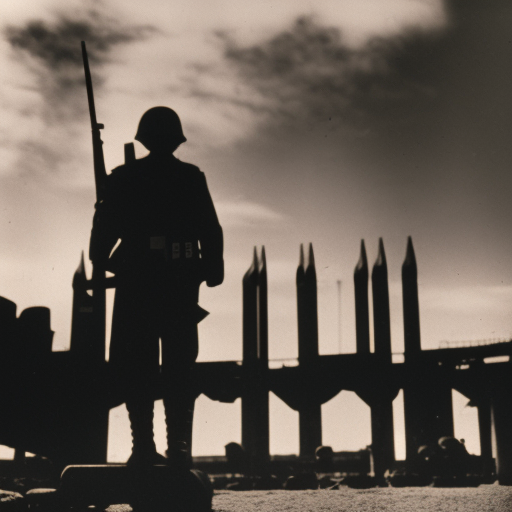Rhineland Offensive: The Allied Invasion of Germany
The Rhineland Offensive was a significant military operation conducted by the Allied forces during World War II. It took place from March 22 to April 1, 1945, and marked the beginning of the end for Nazi Germany. The offensive aimed to cross the Rhine River and establish a bridgehead in the heart of Germany, ultimately leading to the defeat of the German Army and the capture of Berlin.
Background
By early 1945, the Allied forces had made substantial progress in pushing back the German Army on the Western Front. The successful D-Day invasion in June 1944 had paved the way for the liberation of France and the subsequent push into Germany. As the Allies advanced, they faced the formidable natural barrier of the Rhine River, which the Germans had heavily fortified.
Planning and Preparation
The Rhineland Offensive was meticulously planned by the Allied high command, led by General Dwight D. Eisenhower. The operation involved a combined force of American, British, and Canadian troops, totaling over 1.5 million soldiers. The plan called for a massive assault across the Rhine River, utilizing airborne troops, amphibious landings, and armored divisions.
The Offensive
On March 22, 1945, the offensive commenced with a massive aerial bombardment of German positions on the eastern bank of the Rhine. This was followed by the deployment of airborne troops, who were tasked with securing key bridges and creating a bridgehead for the main assault. Despite heavy resistance, the airborne troops successfully captured several vital bridges, enabling the subsequent river crossings.
The main assault began on March 24, with amphibious landings and the crossing of the Rhine by armored divisions. The Allied forces faced fierce opposition from the German Army, which had fortified the riverbanks with artillery and machine gun emplacements. However, the superior firepower and numerical advantage of the Allies allowed them to gradually overcome the German defenses.
Breakthrough and Advance
By March 27, the Allied forces had established a firm bridgehead on the eastern bank of the Rhine. This breakthrough allowed for the rapid advance of armored divisions into the heart of Germany. The German Army, already weakened by years of war, was unable to mount a significant defense. The Allies encountered sporadic resistance but faced little organized opposition.
As the offensive continued, the Allies liberated numerous towns and cities in the Rhineland, including Cologne, Bonn, and Düsseldorf. The German population, weary of war and the oppressive Nazi regime, often welcomed the Allied forces as liberators. The rapid advance of the Allies also disrupted German supply lines and further weakened the German Army’s ability to resist.
Impact and Outcome
The Rhineland Offensive had a profound impact on the outcome of World War II. It effectively shattered the myth of German invincibility and dealt a severe blow to the morale of the German Army. The offensive also paved the way for the final assault on Berlin, which ultimately led to the surrender of Nazi Germany on May 7, 1945.
The success of the Rhineland Offensive can be attributed to the meticulous planning, overwhelming firepower, and superior coordination of the Allied forces. It demonstrated the effectiveness of combined arms operations, with airborne troops, amphibious landings, and armored divisions working in harmony to achieve their objectives.
In conclusion, the Rhineland Offensive was a crucial military operation that marked a turning point in World War II. It allowed the Allies to breach the formidable Rhine River and establish a bridgehead in the heart of Germany. The offensive weakened the German Army, liberated key cities, and paved the way for the final defeat of Nazi Germany.












